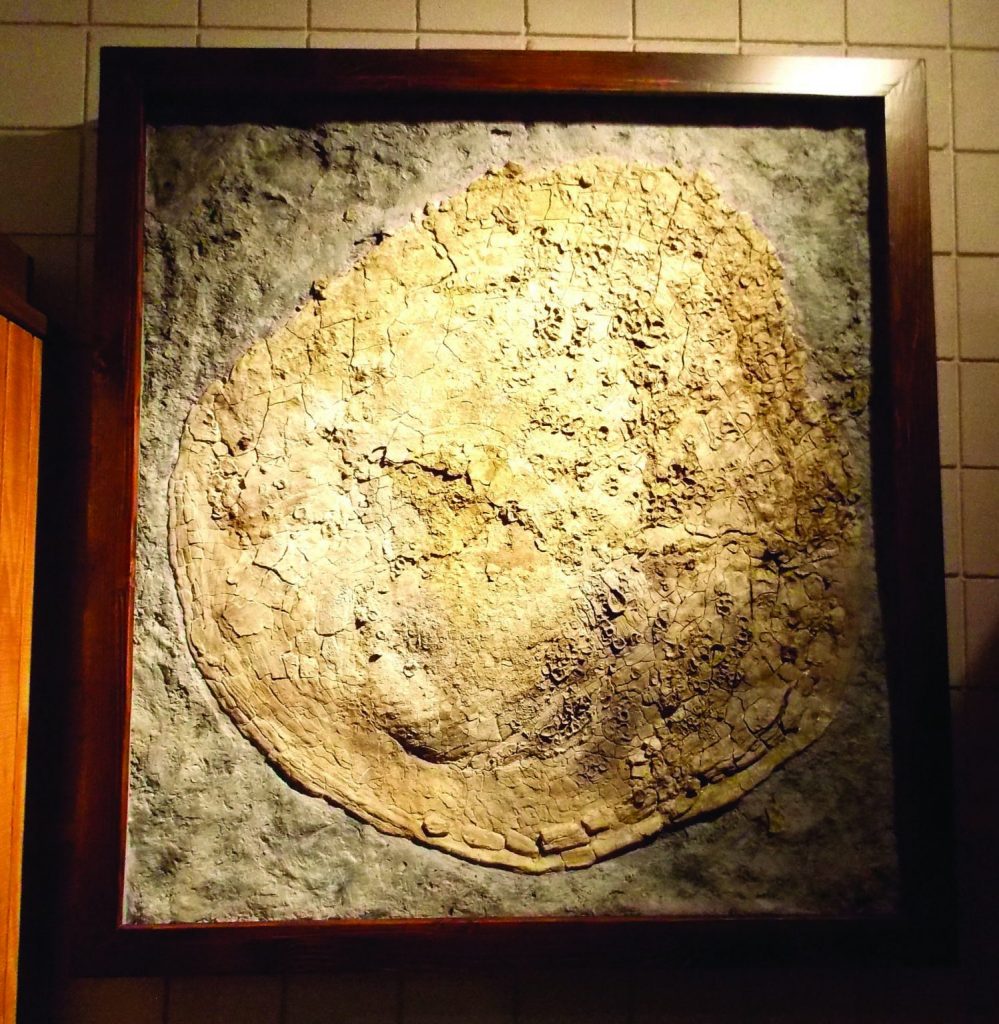Giant clam display in museum
At 4,000 feet above sea level near Green River, Utah, two USU Eastern Prehistoric Museum personnel were searching for marine reptiles last summer and stumbled upon prehistoric giant clams strewn throughout the landscape.
Dr. Kenneth Carpenter, paleontologist and director of the museum, joined colleague Lloyd Logan, director of education and exhibits, for a hike near Green River searching for signs of ancient life.

At 4,000 feet above sea level near Green River, Utah, two USU Eastern Prehistoric Museum personnel were searching for marine reptiles last summer and stumbled upon prehistoric giant clams strewn throughout the landscape.
Dr. Kenneth Carpenter, paleontologist and director of the museum, joined colleague Lloyd Logan, director of education and exhibits, for a hike near Green River searching for signs of ancient life.
The two were walking across the hot, dry and desolate landscape when they spotted what looked like giant clam fossils. Carpenter said, “Stumbling upon those giant three- and four-foot clams was a real surprise. In places, they were so thick we could literally walk from clam to clam. These clams lived 85 million years ago, during the Age of Dinosaurs, when this part of Utah was under the ocean.”
The clams were found eroding out of the Mancos Shale, the soft, gray rock that lies at the foot of the Book Cliffs. Although smaller clams and Nautilus-like ammonites have been found in the Mancos Shale in the area, giant clams had never been reported before. According to Carpenter, there are no reports of giant clams ever being found in Utah, and only a handful of giant clams are on display in museums throughout the country. Thus, the find was a serendipitous moment for the museum.
These giant clams look like large dinner-plates, hence the scientific name Platyceramus means “flat clam.” Today, giant clams are nowhere near the giant four- foot clams in size. The modern peep-squeaks are only two feet or so across and are native to the shallow coral reefs of the South Pacific and Indian oceans. They have also been found off the shores of the Philippines and in the South China Sea. They have never been found in Utah, let alone near Green River.
The areas where the clams were found was once a flat, muddy seafloor and that is a key to understanding why they grew to such monsters. The large clams could spread their weight over a large area to keep from sinking into the seafloor. “These clams became the home to oysters that grew over the shells, as well as the home to small fish that lived within the shells,” Carpenter said. “Numerous fish bones were found within the shells during the excavations.”
After finding the clams, the two secured the site and returned to it later with museum personnel and volunteers to retrieve the giant clams. Because the clams are so thin, a wooden frame was built around the shell, then Plaster of Paris was poured directly on the shell. When dried, the plaster-covered shell was flipped over and taken to the museum, Carpenter said.
John Bird, paleontology technician for the museum, worked with Carpenter for several months to prepare the clams for display at the museum. While Carpenter and Bird were working on the clams, Logan was creating and designing an exhibit to house the fossils for the public to view. The giant clam is 44 inches by 48 inches, but in life might have weighed 50 pounds. Their average life span might have been 100 years or more.
Located in the Hall of Paleontology, the giant clam display is open and ready for the public to view at the museum located at 100 North and 100 East in Price. The hours are Monday-Saturday from 9 a.m. to 5 p.m.




